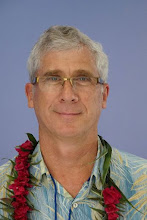Wednesday, July 7, 2010
The Next Christendom
I had some extra time last week and was able to browse through a book I've been wanting to read for some time. Philip Jenkins's The Next Christendom (2002 created a stir when it was first published in 2002 and then reissued in 2007.
Funny, but having leafed through The Next Christendom I was surprized by what all the stirring was about. Instead it confirmed trends and experiences I have encountered in ten years of active ministry. Nothing shocking here.
What does the book say? Jenkins argues that by the year 2050, the Christian church and landscape is going to be very different than is now. By 2050, only one Christian in five will be non-Latino and white. Moreover, the center of the Christian world will be in the Southern Hemisphere, and not the United States and Europe. White Christendom better get ready!
The Christian Church of the future, waxes Jenkins, will be predominantly orthodox, conservative, and even apocalyptic. Typical of some of the younger churches, there will be elements of mysticism, puritanism, faith-healing, and dream-visions. However, here follows a big shift from the present scene. A majority of the Christians will be people of color, poor, live in poverty and persecution, and many will look to the church for comfort and to make sense of their suffering.
The changes are going to be drastic. A Western based, intellectual liberal tradition will continue to exist, but gradually be dwarfed by the Church of the South. And the church will predominantly consist of the poor. There will be ramifications for the clergy too. We will no doubt see a change in the way clergy are trained, and many perhaps will be paid small amounts, if anything at all.
It's errie how Jenkins describes what I see taking place in Hawaii. Many of the traditional churches have graying and shrinking memberships. Many area already experiencing financials problems. A majority of mainlain denominations are in decline, and their future is not certain by any means. Yet many of the churches that are growing consist of the newly arrived to these island, the Chuuk (in our own experience at St. Aidan's), the Marshallese, and the Vietnamese, just to name a few. At the same time, it is an exciting time to see God at work in the world, moving the center of Christendom to a different part of the globe. And to think that many of us "restricted" God to Germany, Britain, Ireland, or the United States for that matter. Who were we kidding?
Most of us fear change, and what we are encountering is a shift in the theological winds if you will. Yet as good history students we need to recall these themes are something followers of the Celtic way are familar and comfortable with. In our own spiritual tradition, we understand that God is not limited to or defined by our own experience, or to a church building, or even to a Holy Book. Our God is a Living God who almost always seems to wonderfully elude our grasp and best of intentions. Try to pin God down, and we are sure to be disappointed. This is what some of the Celtic writers meant when they refered to the "wild" side of God, likening Him to a wild goose. In slightly different language, it is impossible to try and tame God. Instead, He tames us. We are wrong to think that "we have Him". Rather "He has us".
The wind of His Spirit is blowing now, taking His Church in different directions. As Jenkins reminds us, we have nothing to fear as Christianity has always demonstrated the ability to transform weaknesses into strengths.
Subscribe to:
Post Comments (Atom)




No comments:
Post a Comment